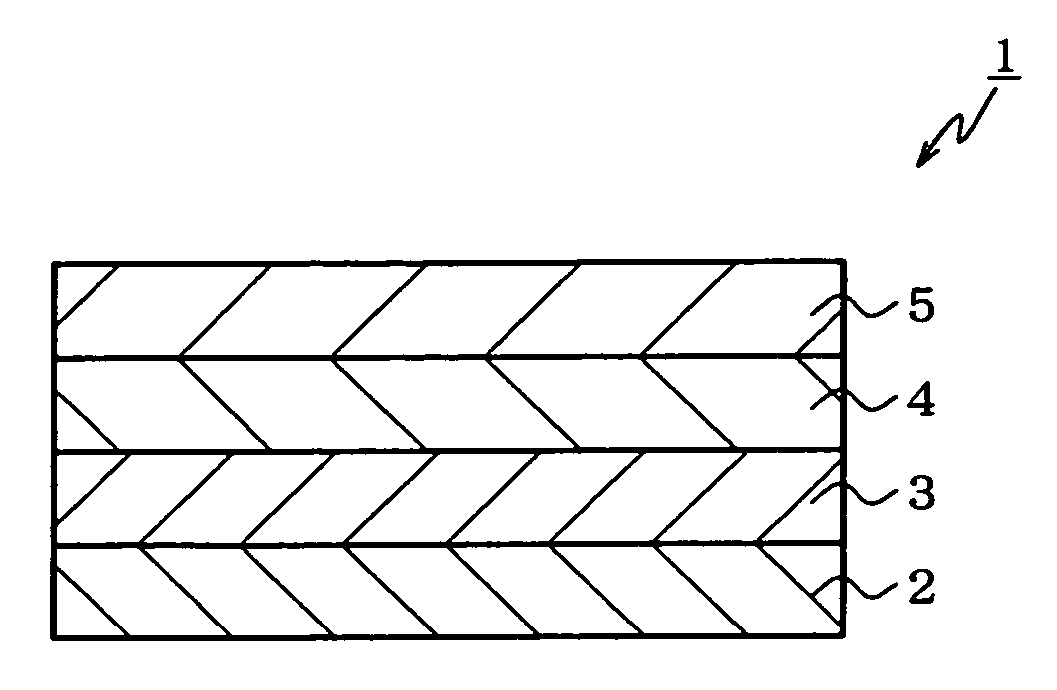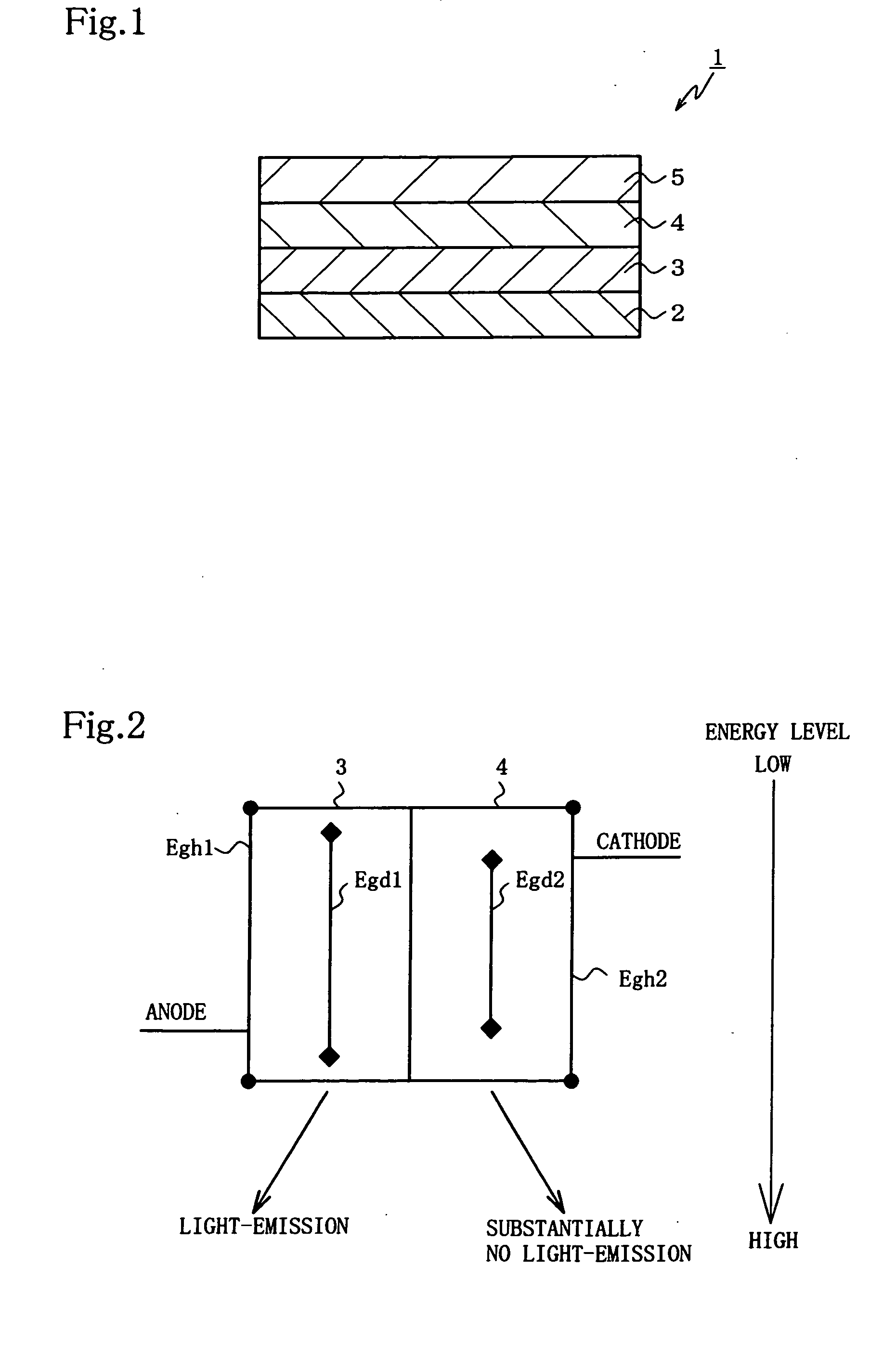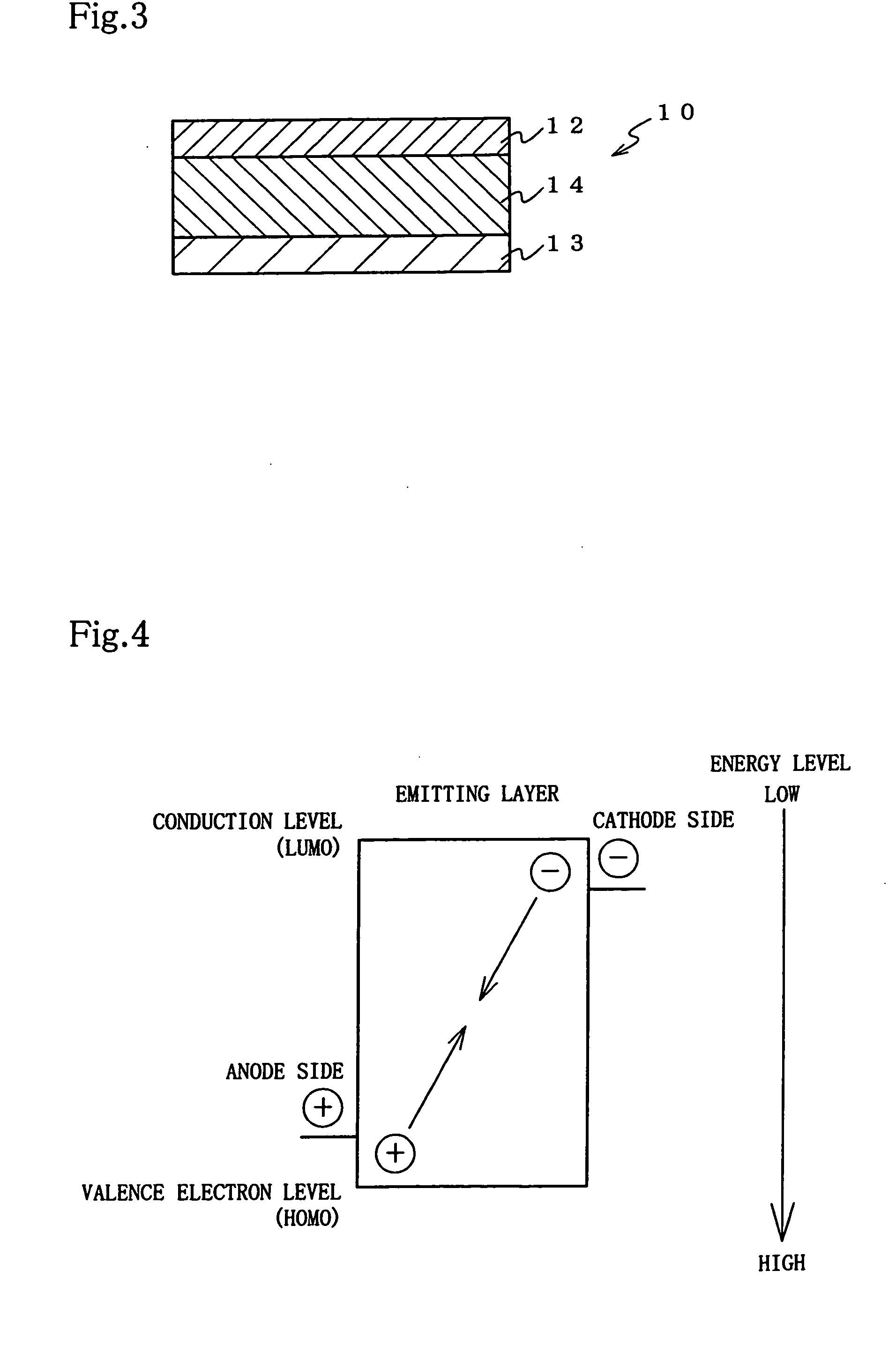Organic electroluminescence element
a technology of electroluminescence element and organic material, which is applied in the direction of discharge tube/lamp details, transportation and packaging, other domestic objects, etc., to achieve the effect of improving color purity and/or durability of the elemen
- Summary
- Abstract
- Description
- Claims
- Application Information
AI Technical Summary
Benefits of technology
Problems solved by technology
Method used
Image
Examples
example 1
[0212] A glass substrate, 25 mm×75 mm×1.1 mm thick, having an ITO transparent electrode (manufactured by Geomatics Co.) was subjected to ultrasonic cleaning in isopropyl alcohol for 5 minutes followed by UV ozone cleaning for 30 minutes.
[0213] The washed glass substrate having the transparent electrode lines was set up on a substrate holder in a vacuum deposition device. First, an N,N′-bis(N,N′-diphenyl-4-aminophenyl)-N,N-diphenyl-4,4′-dia mino-1,1′-biphenyl film (abbreviated to the “TPD 232 film” hereinafter) was formed into a film in thickness of 60 nm on the surface on which the transparent electrode lines were formed, so as to cover the transparent electrode. This TPD 232 film functions as a hole injecting layer.
[0214] After the formation of the TPD 232 film, an N,N,N′,N′-tetra(4-biphenyl)-diaminobiphenylene layer (abbreviated to the “TBDB layer” hereinafter) having a film thickness of 20 nm was formed on the TPD 232 film. This film functions as a hole transporting layer.
[021...
example 2
[0220] An organic EL element was produced (a first dopant: about 3.3% by mol, and a second dopant: about 5.3% by mol) in the same manner as in Example 1 except that the film thickness of the first emitting layer was 10 nm, the ratio of D1 to H1 was 0.3:10 (ratio by weight), the film thickness of the second emitting layer was 30 nm, and the ratio of D2 to H1 was 1.4:30 (ratio by weight).
example 3
[0221] An organic EL element was produced (a first dopant: about 2.8% by mol, and a second dopant: about 5.7% by mol) in the same manner as in Example 1 except that the film thickness of the first emitting layer was 20 nm, the ratio of D1 to H1 was 0.5:20 (ratio by weight), the film thickness of the second emitting layer was 20 nm, and the ratio of D2 to H1 was 1.0:20 (ratio by weight).
PUM
| Property | Measurement | Unit |
|---|---|---|
| Thickness | aaaaa | aaaaa |
| Energy | aaaaa | aaaaa |
| Energy | aaaaa | aaaaa |
Abstract
Description
Claims
Application Information
 Login to View More
Login to View More - R&D
- Intellectual Property
- Life Sciences
- Materials
- Tech Scout
- Unparalleled Data Quality
- Higher Quality Content
- 60% Fewer Hallucinations
Browse by: Latest US Patents, China's latest patents, Technical Efficacy Thesaurus, Application Domain, Technology Topic, Popular Technical Reports.
© 2025 PatSnap. All rights reserved.Legal|Privacy policy|Modern Slavery Act Transparency Statement|Sitemap|About US| Contact US: help@patsnap.com



